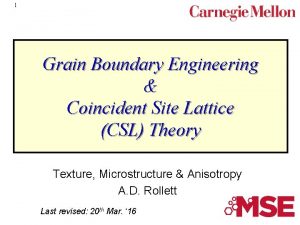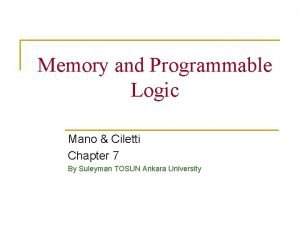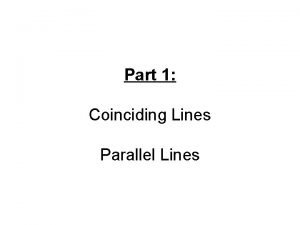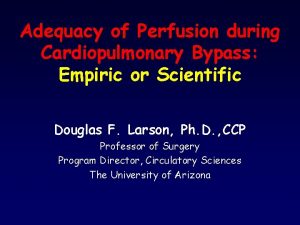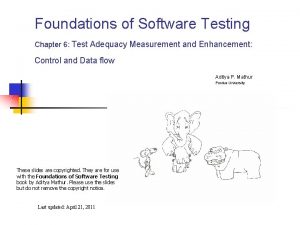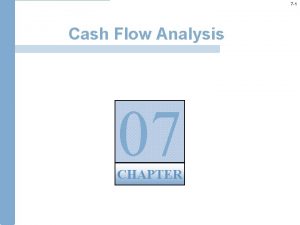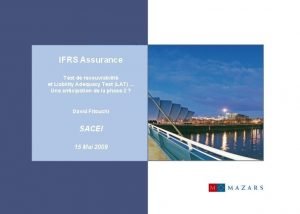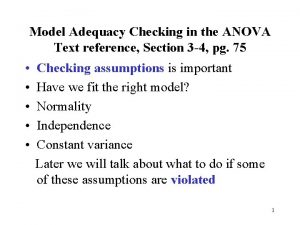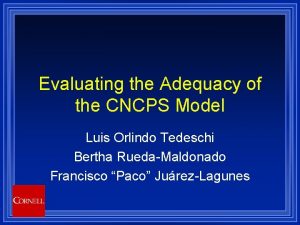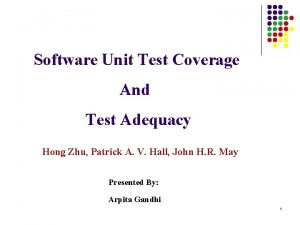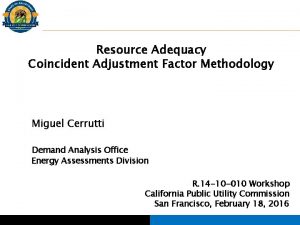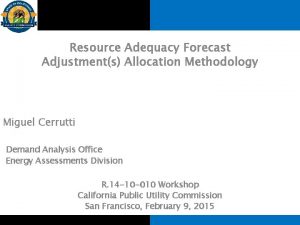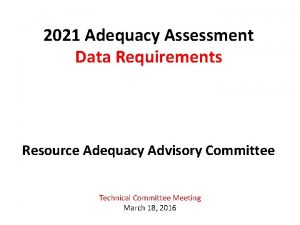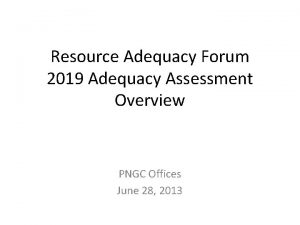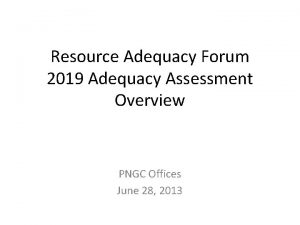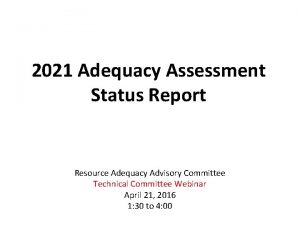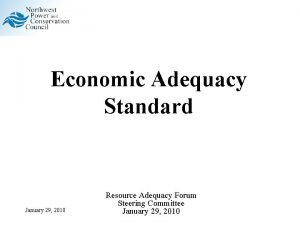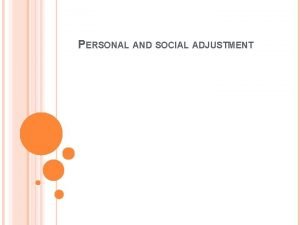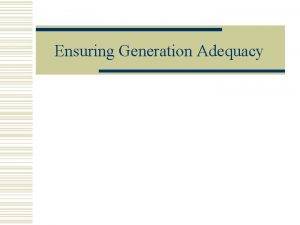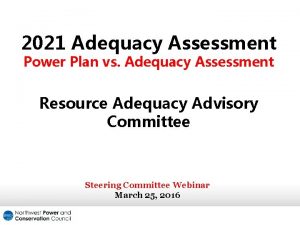Resource Adequacy Coincident Adjustment Factor Methodology Miguel Cerrutti














- Slides: 14

Resource Adequacy Coincident Adjustment Factor Methodology Miguel Cerrutti Demand Analysis Office Energy Assessments Division R. 14 -10 -010 Workshop California Public Utility Commission San Francisco, February 18, 2016

Outline The problem Coincidence factor (CF) Best approaches for calculating CF Improvements

The problem LSE-specific year-ahead and month-ahead load peak forecasts for RA compliance LSE-specific peak load contribution at the time of CAISO’s peaks Accuracy and unbiasedness Transparency / consistency

Coincidence factor (CF) Ratio LSE’s peaks at time of CAISO coincident peaks (CP) to the LSE’s non-coincident peaks (NCP) how close LSE’s peak dates/hours are to CAISO’s five top monthly peak dates/hours CAISO’s peaks strongly correlated with RES LSEs with most RES load - most coincident cross-subsidization - RES/COM/IND CAISO’s peaks - capacity to be procured LSEs capacity obligation / costs

Load profile – January ISO peak 1, 00 COM/IND 0, 90 0, 80 0, 70 0, 60 RES 0, 50 0, 40 0, 30 0, 20 0, 10 Source: LM 2012 0, 00 1 2 3 4 5 6 7 8 9 10 11 12 13 14 15 16 17 18 19 20 21 22 23 24

Coincidence factor (CF) LSEs’ load profiles display significant variation across time in load shapes and time of peaks Hourly loads – time-series CAISO EMS/OASIS/five top monthly peaks CPUC jurisdictional/non-jurisdictional LSEs LSE-specific CF LSE-composite CF – ESPs/CCAs load migration and new ESPs/CCAs

Best approaches for calculating CF Historic approach CF CF in the most recent year over the previous 3 or 5 years / median weather normalized trends over time Forward / forecast approach CF in the next year

Best approach – historic approach CF variation over time load composition – RES, COM, IND, H 2 O stable over time - limited migrating load heavily drives LSEs peak forecasts no easy to correlate to peak – granularity weather – temperature easy to correlate to peak best expected coincidence patterns

Best approach – historic approach Evaluation rule – load profile stability over time and time of peaks CF in the most recent year - LSE’s stable load profile / not differ much from CAISO’s times CF over three to five previous years – LSE’s unstable load profile / differ much from CAISO’s times

Best approach – Weather normalized CAISO’s five top monthly weather normalized (WN) coincident peaks Time-series multi-step regressive model historical weather / Monte Carlo simulation Probability of exceedance distribution LSEs CF - WN CAISO-coincident peaks WN factor - ratio of WN CAISO-coincident peaks and LSE’s median of five top coincident peaks

Best approach – Forward / forecast approach Forward new ESPs/CCAs-specific CF most recent hourly load shapes–service area forecast non-coincident peaks/growth rates Forecast – validation CF as a function of load factors forecast NCP / CP weather CF / weather differences at NCP/CP times forecast CP – WN POE 50 best forecasting practices / reviewing methodology adequately / reasonably CP

Preliminary results LSE Moy CF 0 ne-year CF threeyears CF forward forecast CF average LSE 1 5 . 855 . 917 LSE 2 2 . 860 . 717 New CCA 7 . 922 . 841 New CCA 8 . 945 . 941 7 . 752 . 846 WN factor LSE 3 8 1. 152 LSE 4 8 . 802 LSE 5 7 . 985 CF RES CF COM/IND . 985 . 865 . 955

Improvements Embedding DR impacts in submitted data Posting CAISO’s five top monthly coincident peak load dates and hours Exploring alternative methods be relatively stable over time easy to calculate / monitor / apply Validation - adjustment load migration variations in weather and load composition forecasting an art as much as a science

And so if …
 Coincident site lattice
Coincident site lattice Coincident decoding
Coincident decoding Illustrate coinciding lines
Illustrate coinciding lines Effort adjustment factor
Effort adjustment factor Adequacy
Adequacy Adequacy of test items in testing
Adequacy of test items in testing Certificate of adequacy
Certificate of adequacy Cash flow statement
Cash flow statement Fruitfulness criteria of adequacy
Fruitfulness criteria of adequacy Objects of knowledge
Objects of knowledge Liability adequacy test
Liability adequacy test Model adequacy checking
Model adequacy checking Horizontal and vertical adequacy
Horizontal and vertical adequacy Adequacy
Adequacy Software unit test coverage and adequacy
Software unit test coverage and adequacy
